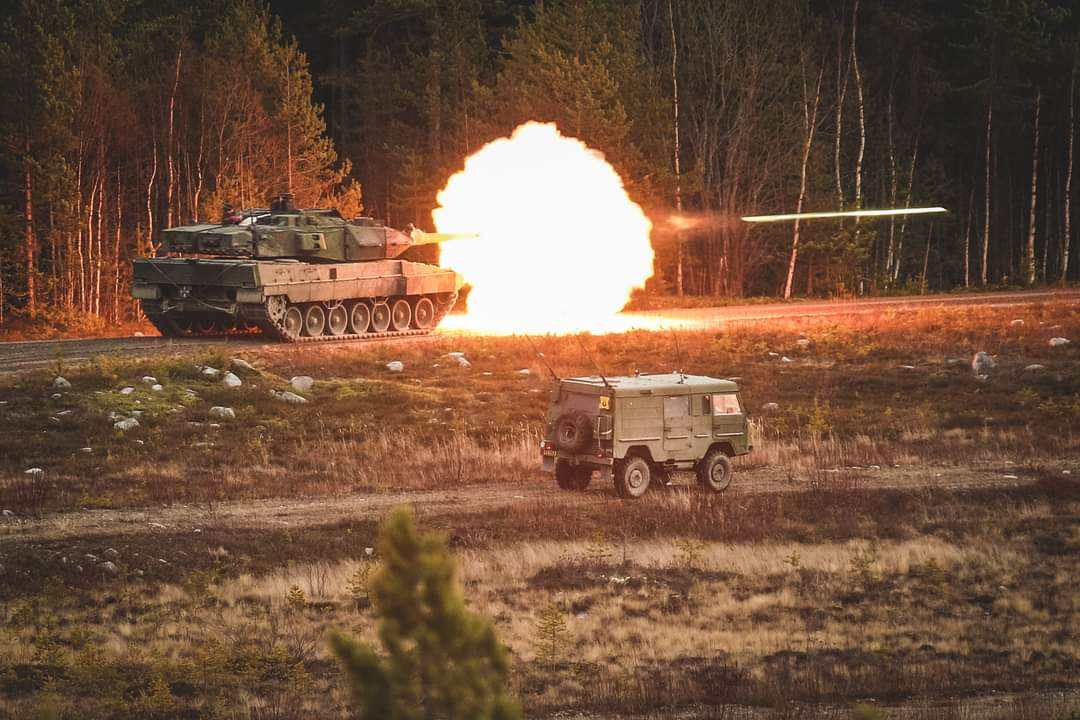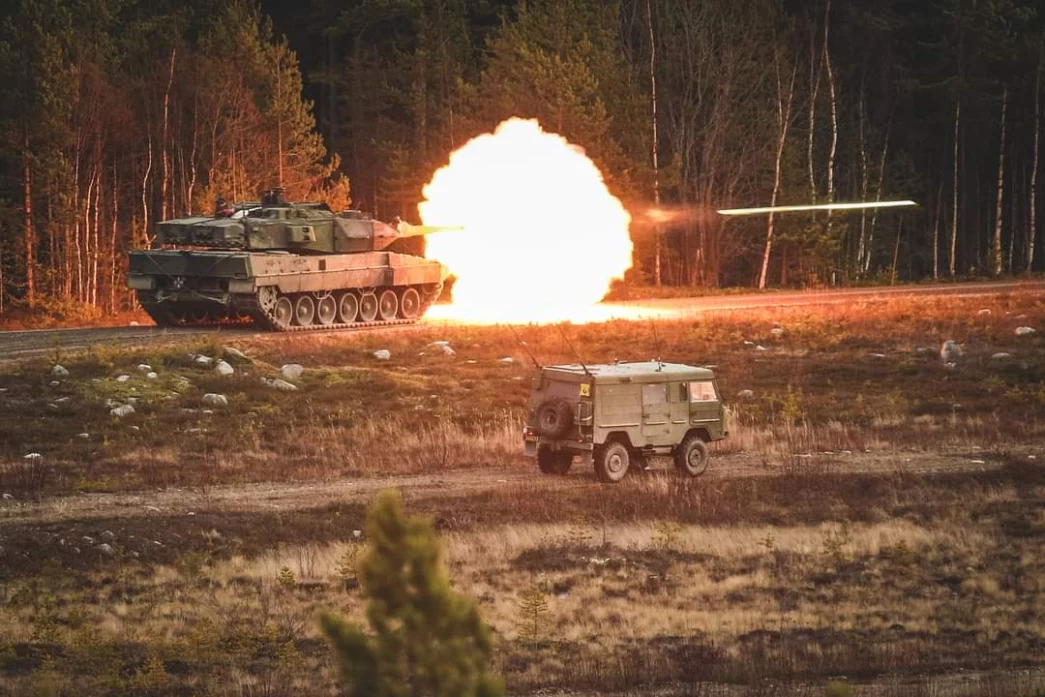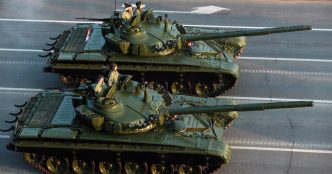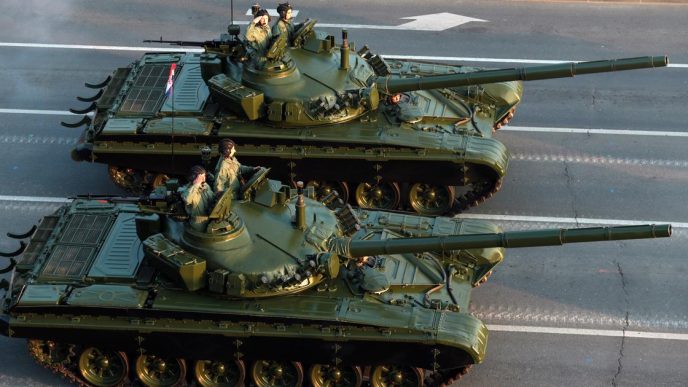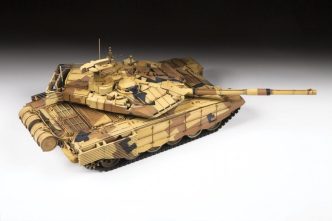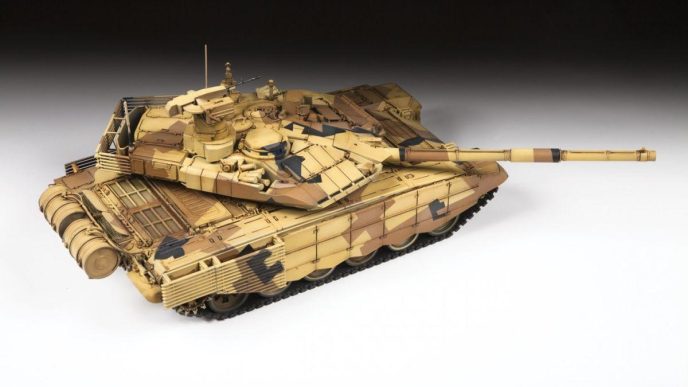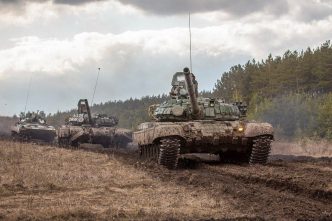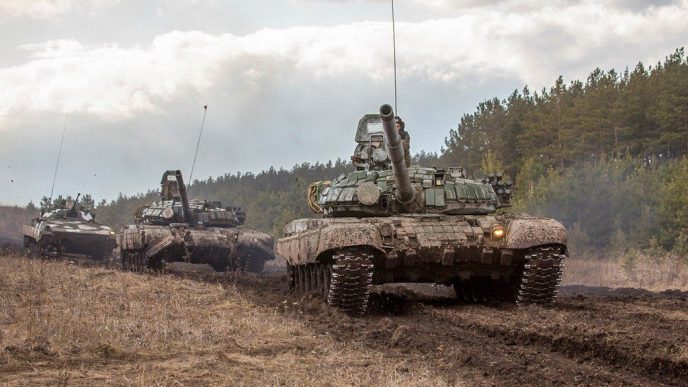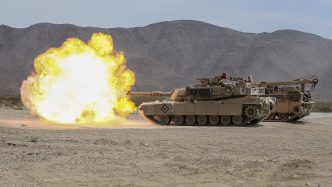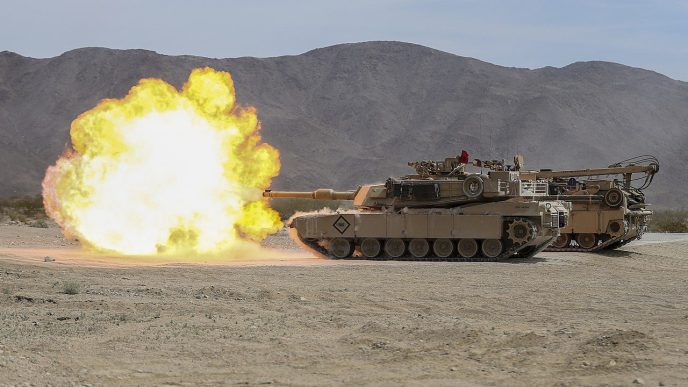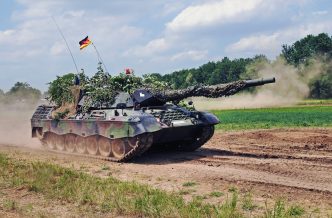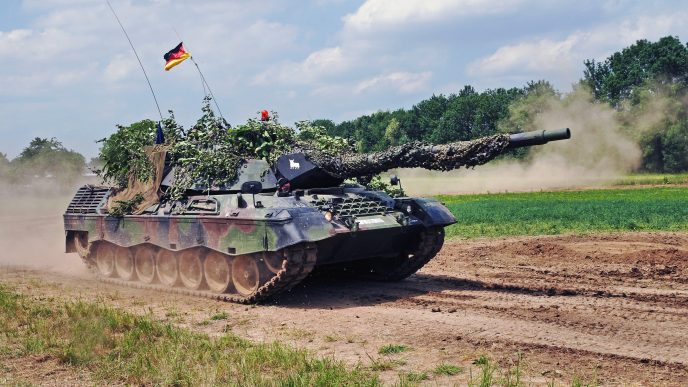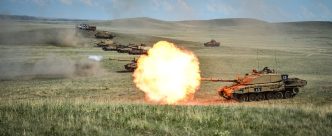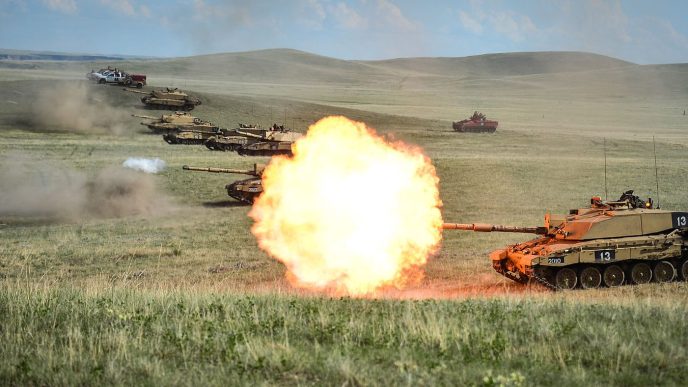The Leopard 2 is the successor of the Leopard 1, the last main battle tank of the West German Army. Today, there are two main development batches of the tank: the original models up to Leopard 2A4, which have vertically faced turret armor, and the improved batch, namely the Leopard 2A5 and newer versions, which have angled arrow-shaped turret appliqué armor together with other improvements. It is also important to note that the tank is armed with Rheinmetall L/55 120mm smoothbore cannon, which fires the fastest tank rounds in the whole NATO inventory.
Key recognition features
- Nose slopes back under the hull with 45 degrees glacis plate, then horizontal hull. Driver front right, turret center, and raise engine compartment rear. Vertical hull sides and rear, louvers extending the full width of the vehicle’s rear
- The turret has a vertical front, sides, and rear with bustle extending right over the engine compartment, a commander’s low profile cupola on the right with periscopic sight to his front, 120 mm gun (with a thermal sleeve and fume extractor) has large mantlet with gunner’s sight in forwarding part of the turret to the immediate right of the mantlet.
- Suspension on each side has seven road wheels, drive sprocket rear, idler front, and four-track return rollers. The upper part is covered by skirting, front idler, and the first two road wheels are also covered by armored skirts.
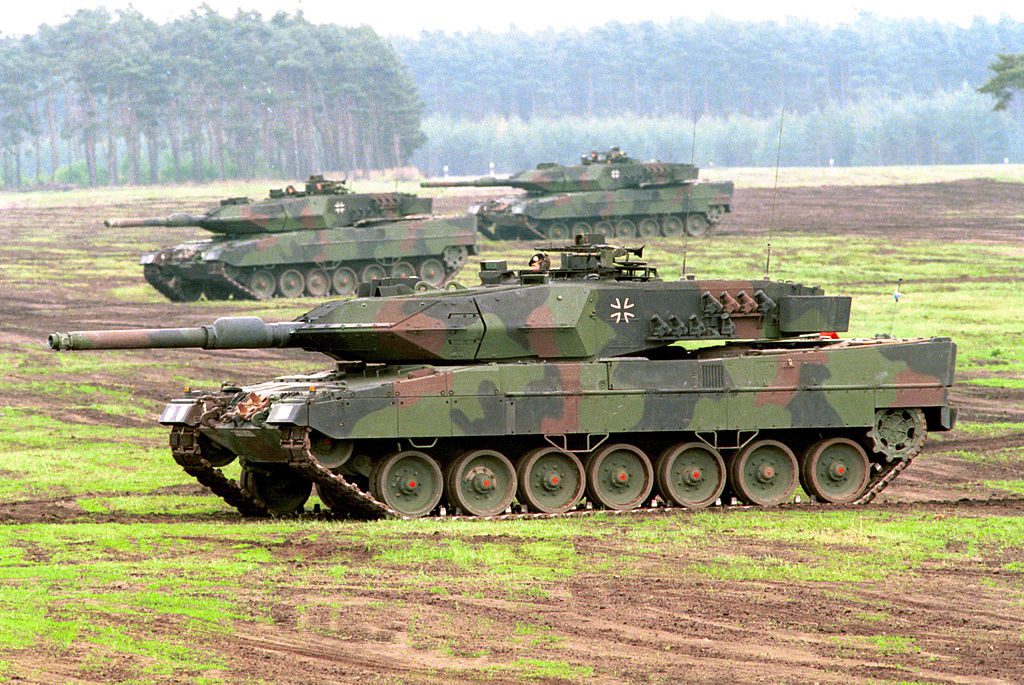
Development
Following the cancellation of MBT-70, full-scale development of a new German MBT commenced. Krauss-Maffei completed prototypes of this new MBT between 1972 and 1974, some armed with a 105 mm gun and some with a 120 mm. With further improvements, it became the Leopard 2, and in 1977 Krauss-Maffei was selected as the prime contractor, and an order for 1,800 vehicles was placed, 810 of which were built by MaK and the remainder Krauss-Maffei. First production vehicles were completed in 1979, with the last of 2,125 vehicles for the German Army delivered in 1992.
In 1979 the Dutch Army ordered a batch of 445 Leopard 2s delivered by 1986, and in 1983 Switzerland selected the Leopard 2 with 35 from Germany and the remaining 345 to be built in Switzerland. Later, Leopard 2 was selected by Spain and Sweden as their main battle tanks.
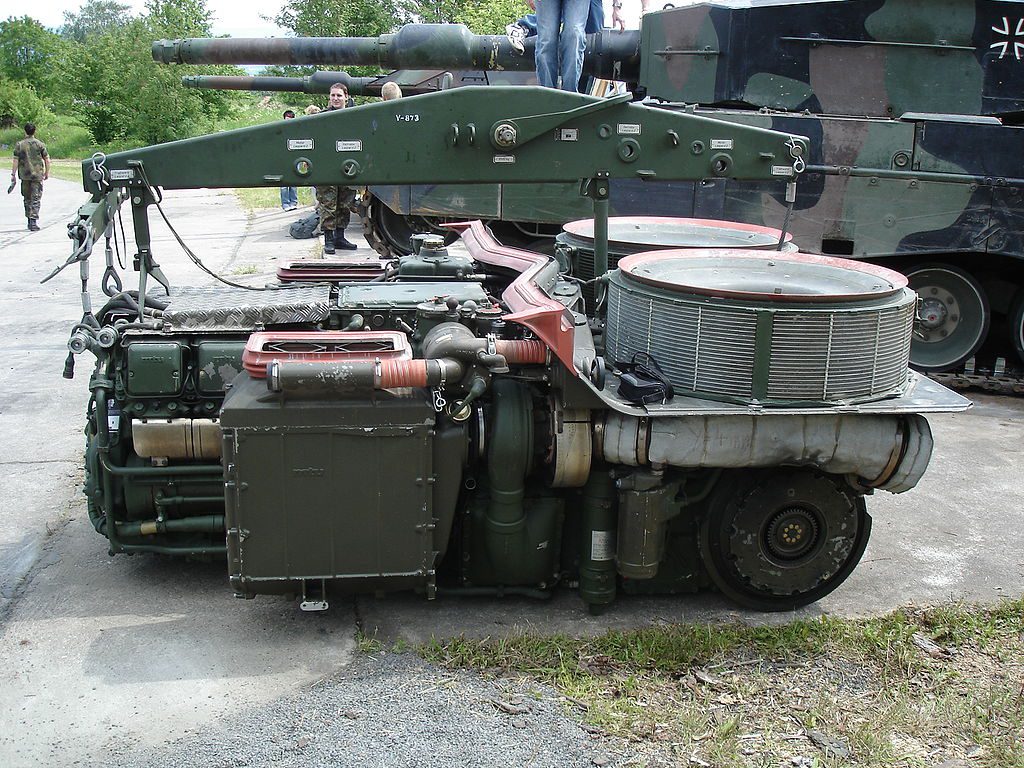
The layout is conventional with the driver front right, turret center, engine, and transmission rear. Commander sits on the right of turret, gunner to his front and loader left. The 120 mm smoothbore gun fires APFSDS-T and HEAT multi-purpose rounds and power-elevates at +20 degrees to -9 degrees, with powered traverse through 360 degrees. The main armament is stabilized in both elevation and traverse.
All models feature digital fire control systems with laser rangefinders, a fully stabilized main gun and coaxial machine gun, and advanced night vision and sighting equipment (first vehicles used a low-light level TV system or LLLTV; thermal imaging was introduced later on). The tank has the ability to engage moving targets while moving over rough terrain.
Variants
- Buffel armored recovery vehicle
- Leopard 2 (improved) is an upgrade of earlier Leopard 2 with many improvements, including additional armor over the frontal arc. Some Leopard 2s of German and the Netherlands are upgraded to this standard. Spanish and Swedish Leopard 2s are being built brand new to this standard.
- Leopard 2 driver-training vehicle, turret replaced by observation type turret (used by Germany and Netherlands).
- Leopard 2A1
- Leopard 2A2
- Leopard 2A3
- Leopard 2A4
- Leopard 2 Marksman
- Leopard 2A5
- Stridsvagn 122
- Leopard 2-140
- Leopard 2A6
- Leopard 2E
- Leopard 2PL
- Leopard 2 PSO
- Leopard 2A7
- Leopard 2A7+
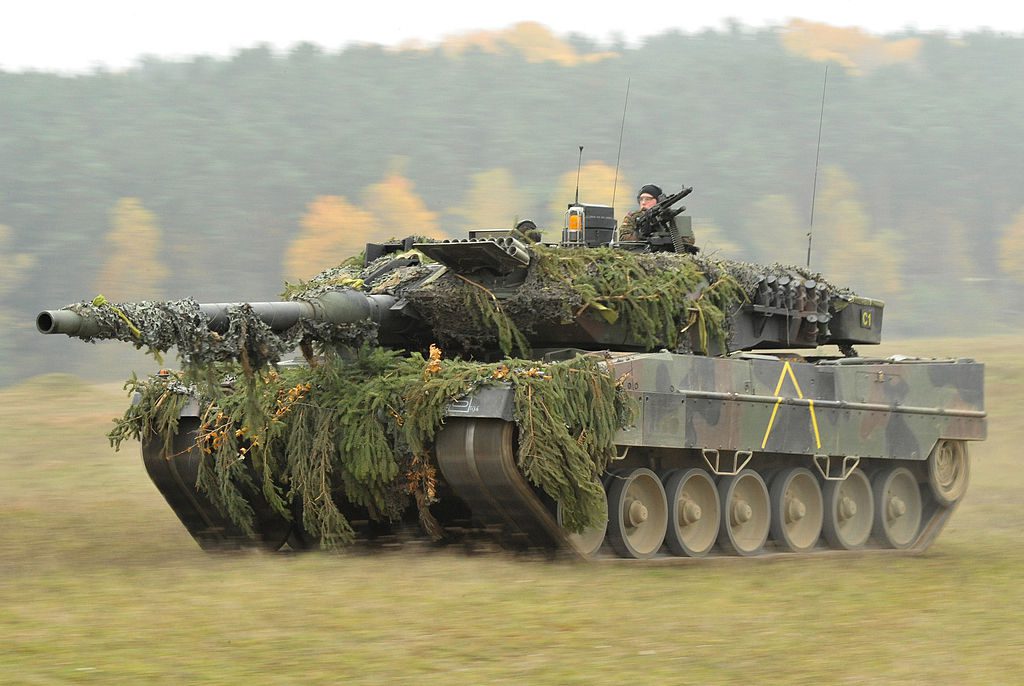
Operational use
The tank was used in Kosovo with the German Army and has seen action in Afghanistan with the Dutch, Danish and Canadian contributions to the International Security Assistance Force and seen action in Syria with the Turkish Armed Forces.
Three Turkish Leopards were destroyed or damaged during the campaign in Syria after being hit with anti-tank missile systems (possibly Fagot or Konkurs anti-tank guided missiles obtained from Syrian or Iraqi Army captured stocks).
Turkey is still primarily using the 2A4, while other NATO armies use the more modern version with better-armored protection and optics, which explains why Turkish tanks perform so poorly against inferior opponents.
User experience
Its mission was to fight against soviet tanks on the plains of northern Germany, and any such engagement would have put it on the defensive. That means you have a very good idea of where the enemy is coming from, and generally, you fight on terrain that you have prepared before. As a consequence, the front armor of the Leopard 2 is quite respectable, but the sides are paper-thin compared to other MBTs of the same era; the A4 doesn’t even have an angled turret armor there.
Additionally, it was designed when it was believed that speed is your best armor. The reasoning was that gun and missile technology advances would be much faster than in armor materials. Therefore it’s a waste of weight to try to armor the vehicle so that it can survive direct hits. So the Leopard 2 was given enough speed and cross-country mobility to a) make hitting it hard and b) achieve a tactical advantage through superior mobility and dictating the terms of engagement.
Later versions of the Leopard 2, starting with the A5, have greatly improved the all-around armor protection; as it turned out, the ideas of the 1970s didn’t turn out quite as they expected. But the A4 is still a cold war tank and is not suited to today’s engagements.
Status
Various versions have served in the armed forces of Germany and 13 other European countries, including the Netherlands, Spain, and Sweden, and several non-European nations, including Canada, Chile, Indonesia, and Singapore.
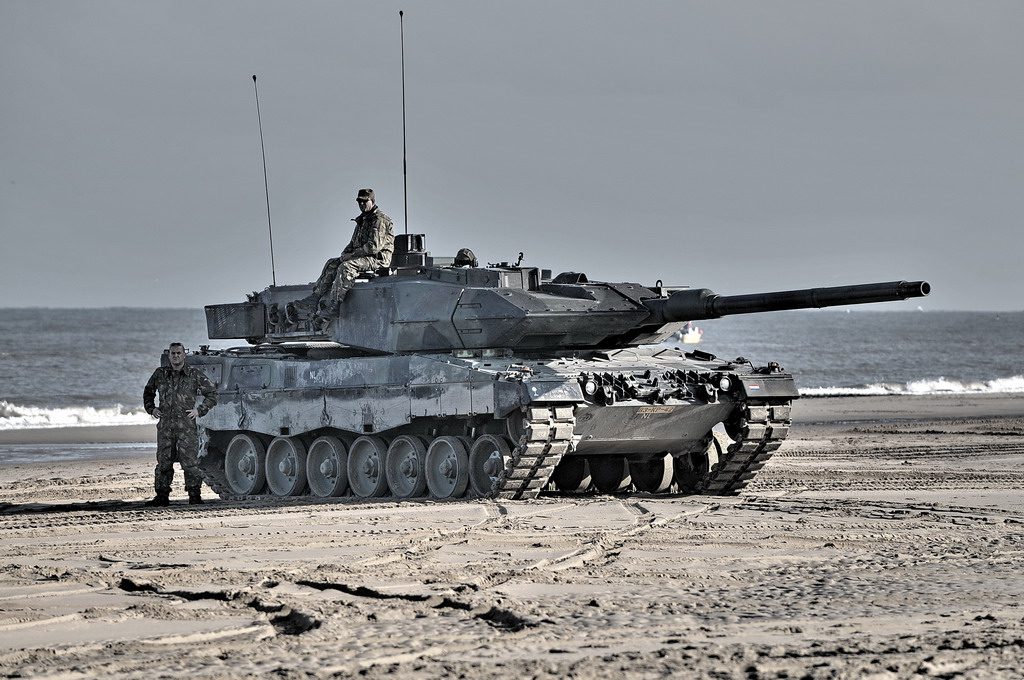
Technical specifications
| Country of origin: | Germany |
| Manufacturers: | Kraus-Maffei, Munich and MaK, Kiel, Germany; OTOBREDA La Spezia, Italy |
| Crew: | 4 |
| Armament: | 1 x 120 mm, 1 x 7.62 mm machine gun (coaxial), 1 x 7.62 mm machine gun (anti-aircraft), 2 x 8 smoke grenade dischargers |
| Ammunition: | 42 x 120 mm, 4,750 x 7.62 mm |
| Length gun forwards: | 9.668 m |
| Length hull: | 7.722 m |
| Width overall: | 3.7 m |
| Height to top of commander’s periscope: | 2.787 m |
| Height to turret top: | 2.48 m |
| Ground clearance: | 0.54 m (front), 0.49 m (rear) |
| Weight, combat: | 55,150 kg |
| Power-to-weight ratio: | 27.27 hp/tonne |
| Ground pressure: | 0.83 kg/cm2 |
| Engine: | MTU MB 873 Ka 501 4-stroke, 12-cylinder multi-fuel, exhaust turbocharged liquid-cooled diesel developing 1,500 hp at 2,600 rpm |
| Maximum road speed: | 72 km/h |
| Maximum road range: | 550 km |
| Fuel capacity: | 1,200 lit |
| Fording: | 1 m |
| Fording with preparation: | 2.25 m |
| Vertical obstacle: | 1.1 m |
| Trench: | 3 m |
| Gradient: | 60% |
| Side slope: | 30% |
| Armor: | classified |
| Armor type: | Laminate/steel |
| NBC system: | Yes |
| Night vision equipment: | Yes (passive for commander, gunner, and driver) |
